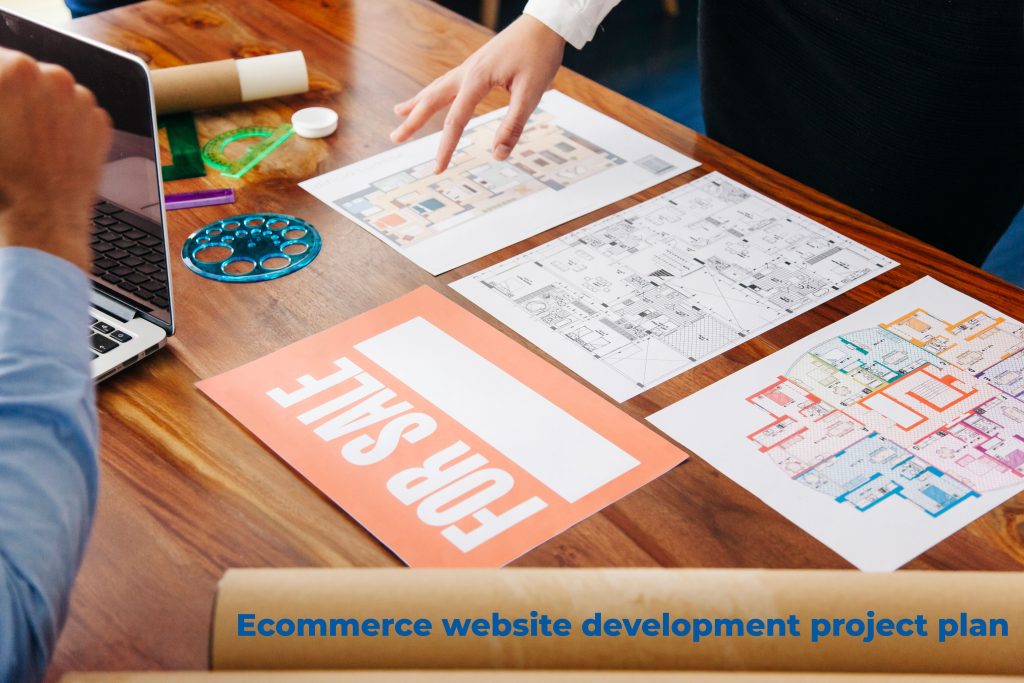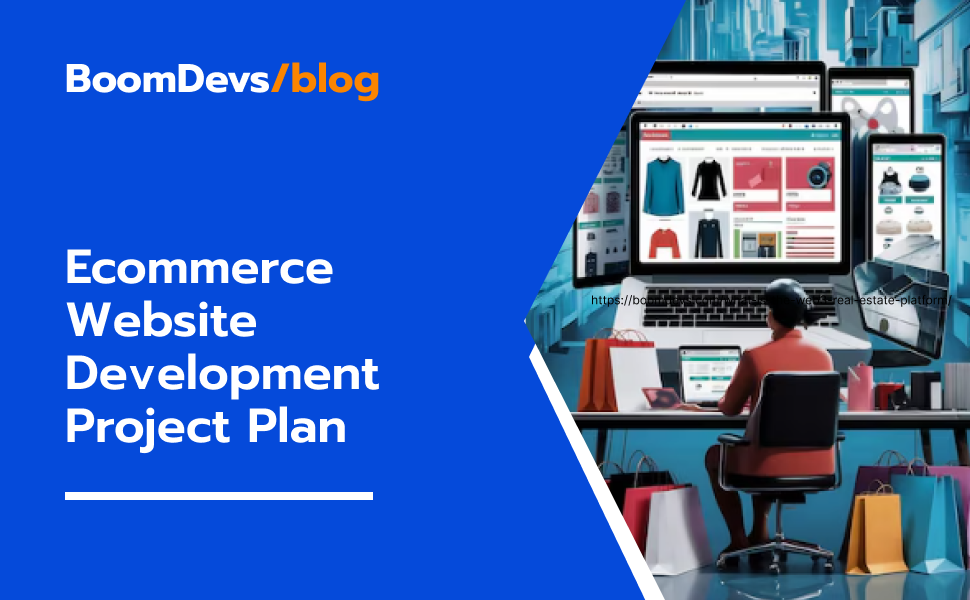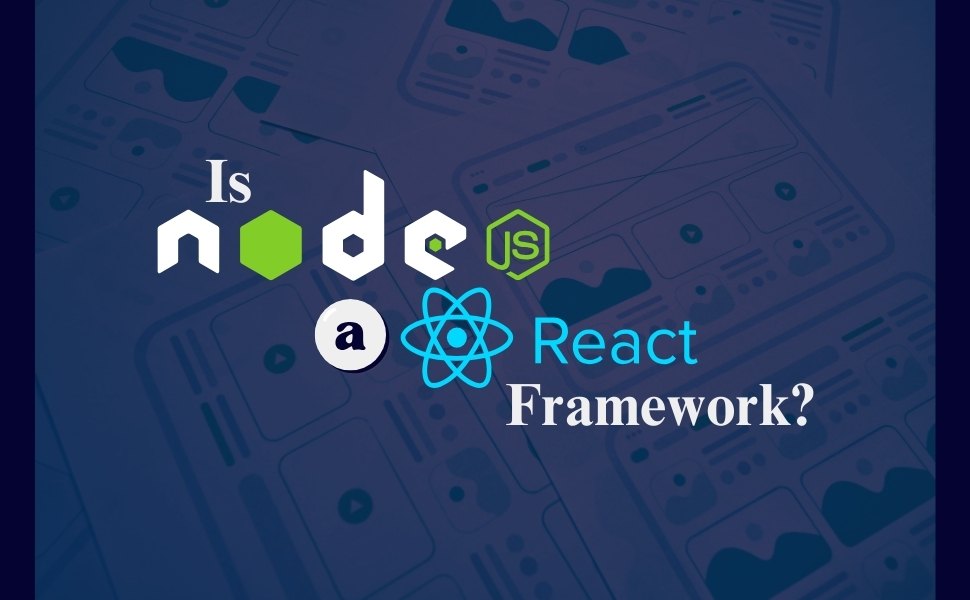Creating a successful Ecommerce website starts with a solid Ecommerce website development project plan. This step-by-step guide will help you through the entire process, from setting clear goals to selecting the right platform, designing a user-friendly interface, and optimizing for SEO
A well-structured plan ensures your online store meets customer needs. It helps attract traffic and turns visitors into loyal customers.
By clearly outlining what your project will include, setting a schedule, planning your budget, and spotting any possible risks, you can use your resources wisely. This way, you are better prepared to deal with any problems that come up.
Whether you’re launching a new store or upgrading an existing one, careful planning is the key to success.
Importance of Planning for Ecommerce Websites
Creating an ecommerce website is more than just setting up a site and adding products. It’s a detailed process that involves many steps. A solid project plan is crucial to make sure everything works well and aligns with your business goals.

Ecommerce is growing fast, and businesses are moving online to sell their products. To be successful, you need a clear plan. This plan should cover everything, from setting goals to ensuring your website is easy to use.
A strong project plan helps you organize each step, meet deadlines, and be flexible when needed. It keeps track of your budget, timeline, and what you can do. With good planning, you can also spot and fix problems early.
Choosing the right plan and partner for your ecommerce project will make the whole process smoother and more successful.
Step-By-Step Ecommerce Website Development Project Plan
A step-by-step Ecommerce website development project plan helps create a successful online store. Start by setting clear goals and understanding your customers. Research your market and competitors. Choose the right platform and build a strong team. Plan your timeline, design a user-friendly website, manage products well, and add secure payment options. Optimize for SEO to attract visitors. Following these steps will help your Ecommerce website succeed.
Step 1: Defining Goals and Objectives
Before starting your ecommerce website development, it is important to be clear about your goals and objectives. This is the first step in creating a successful project plan.
Clarifying Business Objectives
Begin by identifying what you want your ecommerce website to achieve. Different businesses have different goals. Some may aim to increase sales, while others might focus on building brand awareness. Knowing your business objectives will guide the entire development process.
For example, if your goal is to increase online sales, you should focus on creating a website that is easy to use. Make sure it has simple navigation and a smooth checkout process. If your goal is to attract new customers, you will need to invest in SEO (Search Engine Optimization) and content marketing to make your website easier to find.
Setting Clear Metrics for Success
It is important to set measurable goals. These are targets that you can track over time. For instance, you might want to increase your website traffic by a certain percentage or reach a specific conversion rate. You could also aim to grow your email subscriber list. Clear metrics help you see how well your website is performing and allow you to make changes if needed.
Step 2: Market Research and Competitor Analysis
Before building your ecommerce website, it is important to understand the market and analyze your competitors. This step will help you make better decisions and create a website that stands out.
Understanding Your Market
Start by researching the market where your business will operate. Look at the current trends and what is popular among customers. Ask questions like: What products or services are in demand? What are customers looking for when they shop online? Understanding these trends will help you know what your potential customers want and how to meet their needs.
Analyzing Competitors
Next, study your competitors. Visit their ecommerce websites and see what they are doing right. Pay attention to their design, product offerings, pricing, and customer service. Look for things that work well, like easy navigation or fast checkout. Also, notice where they may be weak, such as poor customer reviews or limited product information. This analysis will help you find ways to make your website better.
Identifying Gaps in the Market
By researching the market and analyzing your competitors, you may find gaps or opportunities that others have missed. For example, maybe your competitors have high prices, and you can offer more affordable options. Or, they may lack detailed product descriptions, and you can provide more information to help customers make a decision. You could also improve the user experience by making your website faster and easier to use.
Identifying these gaps allows you to create a unique ecommerce website that attracts customers and meets their needs better than your competitors.
Step 3: Selecting the Right Ecommerce Platform
Choosing the right platform for your ecommerce website is a very important decision. The platform you choose will affect how your website looks, how it works, and how easy it is to manage. It will also influence the experience your customers have when they visit your site.
Comparison of Popular Ecommerce Platforms
There are many ecommerce platforms available, each offering different features and benefits. Here are some of the most popular ones:
- Shopify: This platform is known for being very easy to use, even for beginners. It comes with a wide range of apps and themes that can help you customize your website. Shopify also provides excellent customer support, which is useful if you are new to ecommerce.
- WooCommerce: WooCommerce is a plugin for WordPress. It offers a lot of flexibility and customization options. This platform is a good choice if you already have a WordPress website or want more control over how your website looks and works. However, it may require some technical knowledge to set up and manage.
- Magento: Magento is a highly customizable and very powerful ecommerce platform. It is great for large businesses with complex needs. However, it requires more technical skills to set up and maintain. Magento can be more expensive than other platforms, but it offers advanced features that may be worth the cost.
Each of these platforms has its pros and cons. The best platform for your business will depend on your specific needs and budget.
Choosing a Platform Based on Business Needs
When selecting an ecommerce platform, think about what your business needs now and in the future. Here are some key factors to consider:
- Scalability: Will the platform grow with your business? If you expect your business to expand, choose a platform that can handle more traffic and products over time.
- Ease of Use: How easy is the platform to use? If you do not have technical skills, look for a platform that is simple to set up and manage.
- Payment Gateway Options: Does the platform support the payment methods you want to offer? Make sure it is easy for customers to pay using their preferred methods.
- Support for SEO and Marketing Tools: Does the platform provide tools to help you with search engine optimization (SEO) and marketing? These tools are important for driving traffic to your site and increasing sales.
If you have a small business, you might want a platform that is easy to use and does not require technical expertise, like Shopify or WooCommerce. For larger businesses that need more features and flexibility, Magento might be a better fit.
By carefully considering your business needs, you can choose the right ecommerce platform to help your business grow and succeed.
Step 4: Building the Project Team
To create a successful ecommerce website, you need the right team of people. A strong team is essential for your ecommerce website development project. Each person has a specific role that helps bring the project to life.
Roles Needed for Ecommerce Website Development
Here are the main roles you may need for your ecommerce project:
- Project Manager: The project manager is in charge of the entire project. They make sure everything is on track and running smoothly. They handle schedules, coordinate between different teams, and solve any problems that come up.
- Web Designers: Designers create the look and feel of the website. They decide on the layout, colors, fonts, and overall design to make the website visually appealing. Their goal is to create a site that looks good and is easy for customers to use.
- Web Developers: Developers are the people who write the code that makes your website work. They build the site so that all features function correctly, from adding products to the cart to processing payments.
- Content Creators: Content creators write all the text for your website, such as product descriptions, blog posts, and other content. Their writing should be clear, engaging, and optimized for search engines (SEO).
- SEO Experts: SEO specialists help your website rank higher on search engine results pages. They use strategies like choosing the right keywords, writing good meta descriptions, and building links to increase your website’s visibility.
- Marketing Team: The marketing team promotes your website to attract new customers. This team can include social media managers, email marketers, and advertising specialists. They create campaigns to drive traffic to your site and boost sales.
Importance of Working Together Across Teams
Each team member plays a crucial role, and everyone needs to work together well. For example:
- Designers and Developers: Web designers must work closely with developers to ensure the website design looks good and functions correctly on the backend. This teamwork ensures the website is both beautiful and functional.
- Content Creators and SEO Experts: Content creators need to collaborate with SEO experts to make sure all written content is optimized for search engines. This makes the site easier to find by potential customers.
Good communication between all team members is key to a successful project. When everyone works together and shares ideas, the project runs smoothly and is more likely to meet its deadlines. Having a team that collaborates well will make your ecommerce website development project a success.
Step 5: Creating a Website Development Timeline
A clear timeline is very important for keeping your ecommerce website project on track. A timeline shows all the tasks that need to be done, the deadlines for each task, and who is responsible for them. It helps everyone understand what needs to be done and when, making sure the project stays organized.
Setting Milestones for Each Phase
Breaking the project into smaller phases makes it easier to manage. Each phase should have specific milestones or goals to meet. Here are some common phrases in an ecommerce website development project:
- Planning and Research: Start by defining your goals and objectives. Research your competitors to understand the market and find ways to stand out. This phase sets the foundation for the rest of the project.
- Design Phase: Create mockups and wireframes that show what the website will look like. Choose the right themes or templates that match your brand. This phase focuses on the visual design of the website.
- Development Phase: Begin coding the website and adding features like shopping carts and payment gateways. Integrate all necessary tools, such as inventory management systems or customer service chatbots. This phase brings the design to life.
- Content Creation: Write clear and engaging product descriptions. Create blog posts and other content to attract visitors. Make sure all images are high-quality and optimized for faster loading times.
- Testing and Quality Assurance: Test the website on different devices like phones, tablets, and computers. Check how it looks and works on different browsers (like Chrome, Firefox, and Safari). Fix any issues or bugs to ensure a smooth user experience.
- Launch Phase: Make the website live for everyone to see. Monitor its performance to make sure everything is working correctly. Be ready to address any problems quickly after the launch.
Time Management and Accountability
To keep everything on schedule, it’s important that every team member knows their deadlines and what is expected of them. Using project management tools like Trello or Asana can help assign tasks and track progress. These tools allow everyone to see what needs to be done and when making it easier to stay on track.
Regular check-ins and updates are also helpful. By keeping a close eye on the timeline, you can prevent delays and ensure that the website is launched on time. Having a clear timeline helps keep everyone focused and makes sure your ecommerce website project is a success.
Step 6: Designing the User Interface (UI) and User Experience (UX)
The design of your ecommerce website is very important. It affects not just how your site looks but also how it works. A good design helps customers easily find what they need, making their shopping experience smooth and enjoyable. If your website is hard to use, customers may leave and shop elsewhere.
Importance of User-Friendly Design
A user-friendly design makes it easy for customers to navigate your site. They should be able to browse products, add items to their cart, and complete the checkout process without any problems. Here are some key elements to focus on:
- Clear Navigation: Make sure the main menu is simple and includes all the important categories. This helps users quickly find what they are looking for.
- Search Bar: Include a search bar at the top of your page so customers can find products easily by typing in keywords.
- Simple Checkout Process: The checkout process should be quick and easy. Reduce the number of steps and avoid unnecessary distractions, such as pop-ups or extra forms.
Mobile-Responsive Design
Many people shop online using their smartphones. Your ecommerce website should be mobile-friendly. This means the site should automatically adjust to fit different screen sizes, whether it’s viewed on a computer, tablet, or phone. A mobile-responsive design ensures a smooth shopping experience for all users, regardless of the device they are using.
Key Design Elements for Ecommerce
To make your ecommerce website more attractive and effective, consider these design elements:
- High-Quality Images: Use clear, high-quality images of your products. Show multiple angles to give customers a better view of what they are buying.
- Product Descriptions: Keep product descriptions short, simple, and informative. Use bullet points to highlight key features and benefits.
- Call to Action (CTA) Buttons: Use clear and noticeable buttons like “Buy Now” or “Add to Cart.” Make these buttons stand out by using bright colors and placing them in easy-to-see locations.
By focusing on these elements, you can create a user-friendly and attractive ecommerce website. This will help keep customers on your site longer, encourage them to make purchases, and ultimately grow your business.
Step 7: Product Catalog and Inventory Management
Managing your product catalog and inventory is crucial for any ecommerce website. Properly organized products make it easier for customers to browse, find what they need, and make purchases. Here’s how you can do it effectively:
Organizing Your Product Information
To make shopping easy, organize your products into clear categories and subcategories. For example, if you are selling clothing, you could create main categories like Men’s, Women’s, and Kids. Under each main category, you can have subcategories such as Shirts, Pants, and Shoes.
This way, customers can quickly find what they are looking for without getting lost. Good organization improves their experience and increases the chances of making a sale.
Inventory and Stock Management Systems
Having a reliable inventory management system is important for your ecommerce site. This system helps you keep track of how many products you have in stock, when to reorder, and which items are selling the most.
Many ecommerce platforms, like Shopify and WooCommerce, come with built-in inventory management tools. These tools automatically update your inventory whenever a sale is made. This means you don’t have to manually count stock, which saves time and reduces errors.
Inventory management tools also alert you when stock is low, so you can reorder products on time. This ensures that popular items are always available for customers.
Streamlining the Checkout Process
The checkout process should be quick and easy to reduce cart abandonment. Make sure the cart is simple to review, with a clear summary of the items, shipping costs, taxes, and total price.
Offer multiple payment methods, like credit cards, PayPal, or local payment options, to give customers more flexibility. The fewer steps in the checkout process, the more likely customers are to complete their purchase.
By organizing your product catalog properly, using effective inventory management tools, and making the checkout process smooth, you can create a better shopping experience for your customers. This will help increase sales and keep customers coming back to your ecommerce site.
Step 8: Payment Gateway Integration
Integrating a payment gateway is an important part of building an ecommerce website. Payment gateways process online payments, allowing customers to pay securely and ensuring you receive payments quickly and safely.
Choosing the Right Payment Options for Your Audience
Different customers like different ways to pay, so it’s important to offer multiple payment options. This can help you reach more customers and make it easier for them to complete their purchases. Here are some common payment methods to consider:
- Credit and Debit Cards: Accepting cards like Visa, MasterCard, and American Express is essential. These are the most widely used payment methods.
- PayPal: Many online shoppers trust PayPal for its security and ease of use. It’s a popular choice for both businesses and customers.
- Digital Wallets: Digital wallets, such as Apple Pay and Google Wallet, are becoming more popular. They allow customers to pay with their smartphones quickly and securely.
Offering a variety of payment methods makes it easier for more customers to buy from your site, increasing your sales.
Secure Transactions and Data Protection
Security is very important for online payments. Your ecommerce site must be SSL-certified. SSL (Secure Sockets Layer) certification encrypts the data exchanged between the customer and your website. This helps protect sensitive information, like credit card details, from hackers.
Using secure payment gateways like Stripe or PayPal also adds an extra layer of protection. These gateways handle the payment process securely, reducing the risk of fraud and ensuring your customers’ information is safe.
Multi-Currency Support
If you plan to sell to customers in different countries, consider using a payment system that supports multiple currencies. This allows customers to pay in their local currency, making the buying process easier for them. Supporting multiple currencies can also help reduce problems related to currency conversion, making international sales smoother.
By offering multiple payment options, ensuring secure transactions, and supporting different currencies, you can create a better experience for your customers and increase your chances of making more sales.
Step 9: SEO for Ecommerce
SEO, or Search Engine Optimization, is very important for your ecommerce website. It helps your site appear in search engine results like Google. If people can’t find your site, they won’t visit or buy your products. This is why SEO is a key part of any ecommerce strategy.
Importance of SEO in Ecommerce
Good SEO helps your website rank higher in search results. This means more people will find your products when they search for items related to your business. Without proper SEO, your website may not show up when people search, causing you to lose potential customers and sales.
On-Page SEO for Product Pages
On-page SEO is about optimizing each page on your website to rank higher in search engines. For ecommerce websites, it is crucial to focus on product pages. Here are some simple ways to optimize them:
- Use Relevant Keywords: Find out what words or phrases (keywords) your target customers are using when searching for products like yours. Use these keywords in your product titles, descriptions, and headers. This helps search engines understand what your page is about.
- Optimize Product Images: Use clear, high-quality images of your products. Add alt text to each image that describes what it shows. Alt text helps search engines understand your images, which can improve your rankings.
- Meta Descriptions: Write short, clear meta descriptions for each product page. A meta description is a brief summary of what the page is about. It appears under the title in search results and helps users decide if they want to click on your link.
Off-Page SEO for Ecommerce
Off-page SEO includes actions taken outside of your website to improve your search rankings. Here are two important off-page SEO strategies:
- Backlinking: Backlinks are links from other websites to your site. The more quality backlinks you have, the more search engines will trust your site. Reach out to reputable websites or blogs to link to your site. This tells search engines that your site is valuable and trustworthy.
- Social Media Engagement: Actively engage with customers on social media platforms like Facebook, Instagram, and Twitter. Share your content, respond to comments, and promote your products. This increases your brand’s visibility and drives more traffic to your site.
Keyword Research and Optimization
Finding the right keywords is essential for effective SEO. Use tools like Google Keyword Planner or Ahrefs to discover keywords that have high search volumes but low competition. These are the keywords most likely to help your site rank higher.
Once you have a list of good keywords, use them naturally in your content. Include them in product descriptions, blog posts, and other parts of your website. This will help improve your rankings and bring more visitors to your site.
By following these SEO steps, you can help your ecommerce website reach more customers, increase traffic, and boost sales.
Creating a Successful Ecommerce Website Development Plan with Boomdevs
Building an ecommerce website can seem overwhelming, but with a good plan, it becomes much easier. Boomdevs will help you to create a successful ecommerce website development project plan that is clear, simple, and effective. Whether you are starting from scratch or improving your current site, Boomdevs offers services that fit your specific needs.
Boomdevs makes sure your eCommerce website is fast, easy to use, and secure. They also focus on making sure your website looks good on all devices (like phones and tablets) and is easy to find on search engines like Google.
Final Thought
A successful ecommerce website starts with a clear and well-structured project plan. It helps you set goals, choose the right platform, and create a user-friendly design. With proper planning, you can stay on budget, meet deadlines, and handle any challenges that come up.
No big company would launch a project without a solid plan. Likewise, for your ecommerce website, planning is crucial to avoid problems and achieve success. If you need help, consider partnering with an expert agency that can guide you through the process and ensure your website is built effectively.
Remember, every business is different, and your plan may need adjustments. Start planning today to create an ecommerce website that attracts customers, boosts sales, and supports long-term growth.








